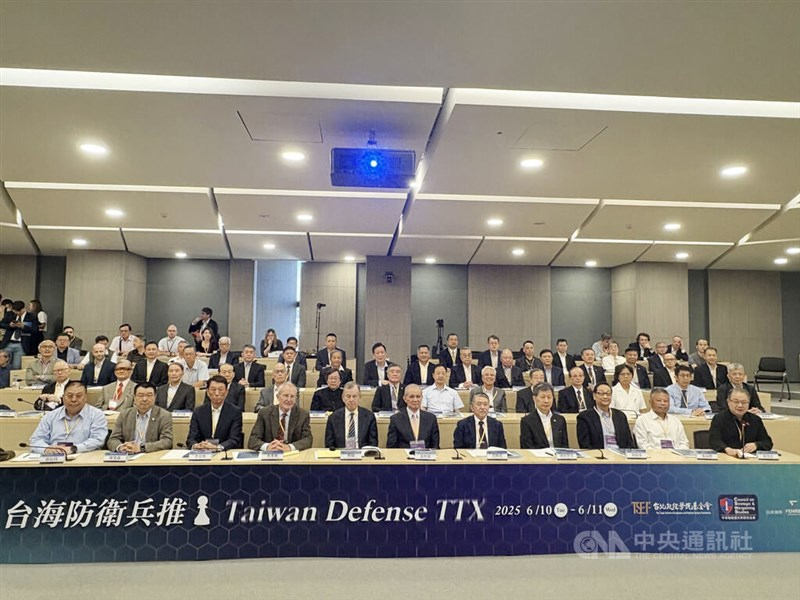Three prominent Taiwanese organizations—the Taipei School of Economics and Political Science Foundation, Center for Peace and Security, and Council on Strategic and Wargaming Studies (CSWS)—hosted a two-day tabletop wargame simulating a serious escalation of Chinese military activities around Taiwan in the year 2030. The goal? To stress-test Taiwan’s political, military, and diplomatic responses to China’s intensifying “gray zone” threats—actions just short of open war.
🧭 Original Insight: Why This Matters in 2025
While the simulation is set in 2030, its significance in 2025 is profound. China’s growing use of gray zone tactics—cyberattacks, economic coercion, disinformation campaigns, and provocative military maneuvers—are already testing Taiwan’s defense posture. This simulation reflects increasing urgency in Taiwan’s strategic community to anticipate the next phase of conflict: not war, but persistent, paralyzing pressure.
The exercise reveals key lessons for:
- Taiwan’s defense strategy (especially rules of engagement in ambiguous scenarios),
- U.S.-Taiwan military coordination (where help stops and where sovereignty begins),
- and regional security doctrine for countering non-traditional threats from China.
🧠 Key Simulation Scenario – “Move 1”
In the 2030 simulation:
- China’s navy crosses the 12-nautical mile boundary of Taiwan’s territorial waters.
- This incursion follows high-level U.S.-Taiwan Cabinet visits and ongoing civil unrest in China due to a faltering economy.
- The simulation avoids kinetic conflict, focusing on strategic restraint vs. national resolve.
🇹🇼 Taiwan’s Simulated Response:
- Deploys Coast Guard and Navy vessels to monitor intrusions.
- Sends submarines to key maritime “ambush zones”, likely near Yonaguni and Bashi Channel.
- Maintains a “no first shot” policy, avoiding direct military escalation.
🇺🇸 U.S. Team Response:
- Commits to increased intelligence sharing.
- Moves forces from Guam and Japan closer to Taiwan but avoids direct military presence on the island.
- Encourages Taiwan to issue warnings before defensive action to preserve international support.
🔍 Analysis: The Strategy Behind Restraint
The scenario revealed both strengths and potential flaws in Taiwan’s crisis management:
- Strategic Dilemma: Taiwan must show resolve but avoid provoking a war it cannot win alone.
- Submarine Deployment Debate: One military expert argued Taiwan may have overreacted by deploying submarines, a move that risks revealing key assets prematurely.
- Gray Zone Pressure: The blurred line between provocation and invasion leaves Taiwan with limited leeway. Overreact, and Taiwan risks isolation. Underreact, and it may lose deterrence.
CSWS Chairman Alexander Huang noted that by 2030, Taiwan is expected to have received all U.S.-ordered weapons, possibly including long-range missiles, drones, and missile defense systems. This changes the calculus for both deterrence and escalation.
🎯 Key Takeaways
- Gray Zone Warfare is Real and Rising: China may increasingly leverage ambiguity to undermine Taiwan without formal warfare.
- Restraint is a Strategic Weapon: Avoiding the first shot maintains Taiwan’s global legitimacy but tests domestic morale.
- Military Readiness Must Match Diplomacy: Wargames suggest Taiwan must align weapons procurement, operational doctrine, and diplomatic messaging for coherent national defense.
📌 FAQs
What is a tabletop exercise?
A tabletop exercise is a discussion-based simulation where participants analyze and role-play hypothetical scenarios to evaluate strategic responses.
Why focus on the year 2030?
By 2030, Taiwan is expected to have received a full package of defense systems from the U.S., making it a meaningful benchmark year to evaluate defense capability in a future conflict scenario.
What are “gray zone” tactics?
These are aggressive but non-kinetic actions by a state, such as cyberattacks, disinformation, airspace violations, or economic coercion, designed to pressure an adversary without provoking outright war.
Did Taiwan simulate firing on Chinese ships?
No. In the simulation, Taiwan followed a no-first-shot policy, opting to shadow Chinese vessels and set ambush positions without direct engagement.
What role did the U.S. play in the simulation?
The U.S. team simulated enhanced military deterrence (e.g., force movement near Taiwan) and intelligence sharing, but did not simulate stationing forces in Taiwan.


